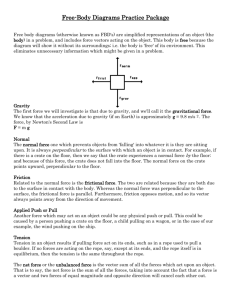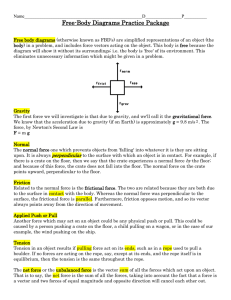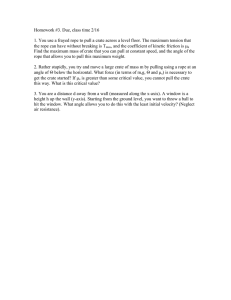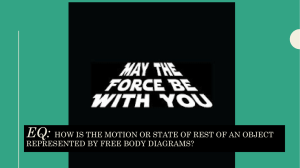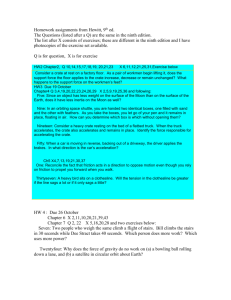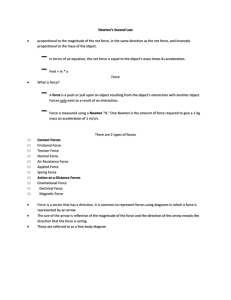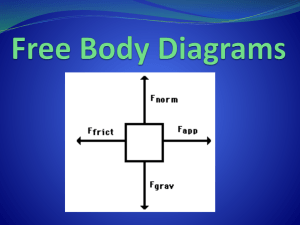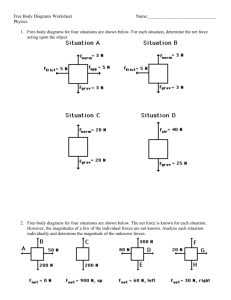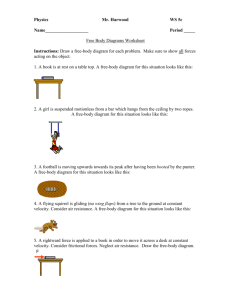Free Body Diagram Practice Package 9/5
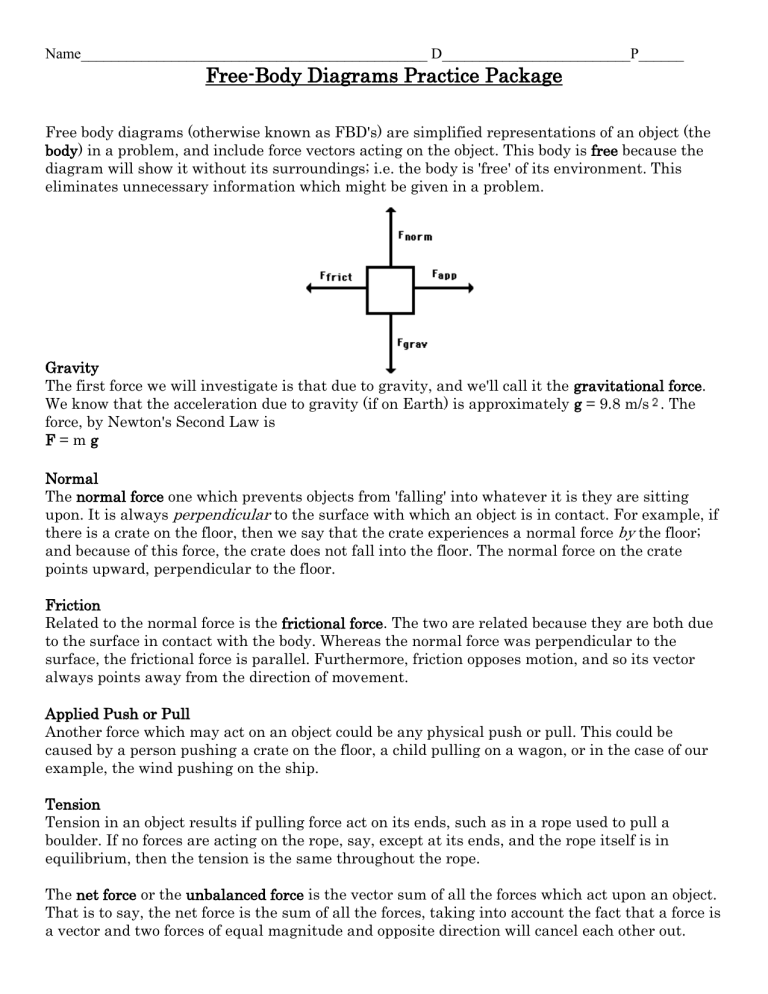
Name______________________________________________ D_________________________P______
Free-Body Diagrams Practice Package
Free body diagrams (otherwise known as FBD's) are simplified representations of an object (the body) in a problem, and include force vectors acting on the object. This body is free because the diagram will show it without its surroundings; i.e. the body is 'free' of its environment. This eliminates unnecessary information which might be given in a problem.
Gravity
The first force we will investigate is that due to gravity, and we'll call it the gravitational force.
We know that the acceleration due to gravity (if on Earth) is approximately g = 9.8 m/s . The force, by Newton's Second Law is
F = m g
Normal
The normal force one which prevents objects from 'falling' into whatever it is they are sitting upon. It is always perpendicular to the surface with which an object is in contact. For example, if there is a crate on the floor, then we say that the crate experiences a normal force by the floor; and because of this force, the crate does not fall into the floor. The normal force on the crate points upward, perpendicular to the floor.
Friction
Related to the normal force is the frictional force. The two are related because they are both due to the surface in contact with the body. Whereas the normal force was perpendicular to the surface, the frictional force is parallel. Furthermore, friction opposes motion, and so its vector always points away from the direction of movement.
Applied Push or Pull
Another force which may act on an object could be any physical push or pull. This could be caused by a person pushing a crate on the floor, a child pulling on a wagon, or in the case of our example, the wind pushing on the ship.
Tension
Tension in an object results if pulling force act on its ends, such as in a rope used to pull a boulder. If no forces are acting on the rope, say, except at its ends, and the rope itself is in equilibrium, then the tension is the same throughout the rope.
The net force or the unbalanced force is the vector sum of all the forces which act upon an object.
That is to say, the net force is the sum of all the forces, taking into account the fact that a force is a vector and two forces of equal magnitude and opposite direction will cancel each other out.
Name______________________________________________ D_________________________P______
Examples
One Dimensional
In these examples, the forces cancel in at least one of the directions. This makes it easier to find the unbalanced force because you don’t have to use trigonometry.
Two Dimensional
Three dogs are fighting over a bone. One is pulling to the left with a force of 20N, another to the right with a force of 35N and the third upward with a force of 15N. What is the net force on the bone?
Using vector components we see that the unbalanced force in the horizontal plane is 15 N left.
We can then use Pythagorean theorem to add the 15 N [left] to the 15 N [up] which gives a net force of 21.2 N [left 45° up].
Name______________________________________________ D_________________________P______
Practice Questions:
1.
Free-body diagrams for four situations are shown below. For each situation, determine the net force acting upon the object.
2.
Free-body diagrams for four situations are shown below. The net force is known for each situation. However, the magnitudes of a few of the individual forces are not known.
Analyze each situation individually and determine the magnitude of the unknown forces.
Name______________________________________________ D_________________________P______
An egg is free-falling from a nest in a tree. Neglect air resistance.
A flying squirrel is gliding (no wing flaps) from a tree to the ground at constant velocity.
Consider air resistance.
A rightward force is applied to a book in order to move it across a desk with a rightward acceleration. Consider frictional forces. Neglect air resistance.
Name______________________________________________ D_________________________P______
A college student rests a backpack upon his shoulder. The pack is suspended motionless by one strap from one shoulder.
A skydiver is descending with a constant velocity. Consider air resistance.
A force is applied to the right to drag a sled across loosely packed snow with a rightward acceleration.
Name______________________________________________ D_________________________P______
A football is moving upwards towards its peak after having been booted by the punter.
A car is coasting to the right and slowing down.
